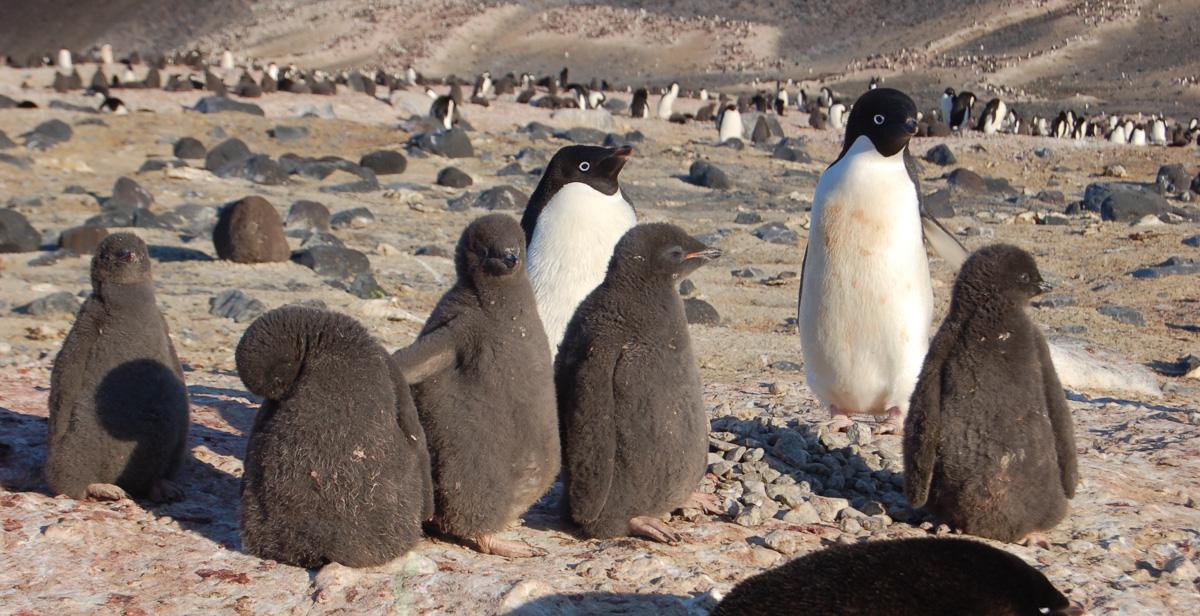Media release
From:
Analysis of sedimentary ancient DNA has illuminated 6000 years of the lives of Adélie penguin colonies on Antarctica’s Ross Sea coast, showing how animals in the region responded to climate and environmental change events over millennia.
The study, published in Nature Communications and conducted by an international team of researchers, reported metagenomic sequencing of 156 sediment samples, which gave insights into the penguin species and other animals they interacted with.
“Ancient sedimentary DNA recovered from Adélie penguin colonies allowed us to detect the presence of other local species through time, including a range of birds, seals and invertebrates,” says lead author Dr Jamie Wood, a terrestrial ecologist and ancient DNA specialist from the University of Adelaide’s School of Biological Sciences and Environment Institute.
“We discovered that though the Antarctic silverfish is the dominant fish species consumed by Adélie penguins today, they have not always been the penguins’ most common prey.
“The bald notothen, a cryopelagic fish, was an important prey species 4000 years ago. Populations appear to have declined in the southern Ross Sea, likely due to changing sea ice conditions, which led to a change in the Adélie penguin diet.”
The sedimentary ancient DNA (sedaDNA) analysis also revealed the presence of southern elephant seals.
“It was a complete surprise to find a potential former breeding colony of southern elephant seals at Cape Hallett on the Ross Sea coast,” said Dr Chengran Zhou of BGI Research, Wuhan, a joint lead author of the study.
“Although these seals no longer breed on the Antarctic mainland, we now have evidence to indicate they once did more than 1000 years ago.
“There was no previous evidence of southern elephant seal occupation from Cape Hallett until we found their DNA in sediments. Cape Hallett is now the northernmost possible former breeding site identified from the Ross Sea region.”
Study co-author Dr Theresa Cole, from the University of Adelaide, says insights such as these are important as we develop approaches to conservation for animal populations in rapidly changing environments.
“Looking at biological records that span thousands of years gives us important insights into how species respond to environmental and climatic conditions that may not have been experienced in recent times,” Dr Cole says.
“Understanding the resilience of species to these natural environmental and climatic perturbations gives us a better ability to predict how they might respond to future challenges.”
Future studies of Antarctic sedaDNA could look even deeper into the past.
“We found that even the oldest DNA fragments recovered from the sediments, from 6000 years ago, were very well preserved, indicating there is potential for DNA that is hundreds of thousands of years old to be present in local deposits,” says Professor Guojie Zhang, senior author of the study, from the Centre for Evolutionary and Organismal Biology at Zhejiang University.
Technological developments mean teams like Dr Wood’s will continue to make new discoveries using sedaDNA.
“SedaDNA is a rapidly growing field of research and is providing insights into past species and ecosystems at an unprecedented level of detail,” Dr Wood says.
“The field of ancient sedimentary DNA research has largely been founded in the high-latitude permafrost soils and sediments of the northern hemisphere, where excellent records of past biodiversity have been recovered over the past two decades.
“In contrast, terrestrial sediments from high latitudes of the southern hemisphere have received little attention. We believe our study is the first to report the recovery of ancient DNA from terrestrial sediments in Antarctica.”
Multimedia





 Australia; SA
Australia; SA



